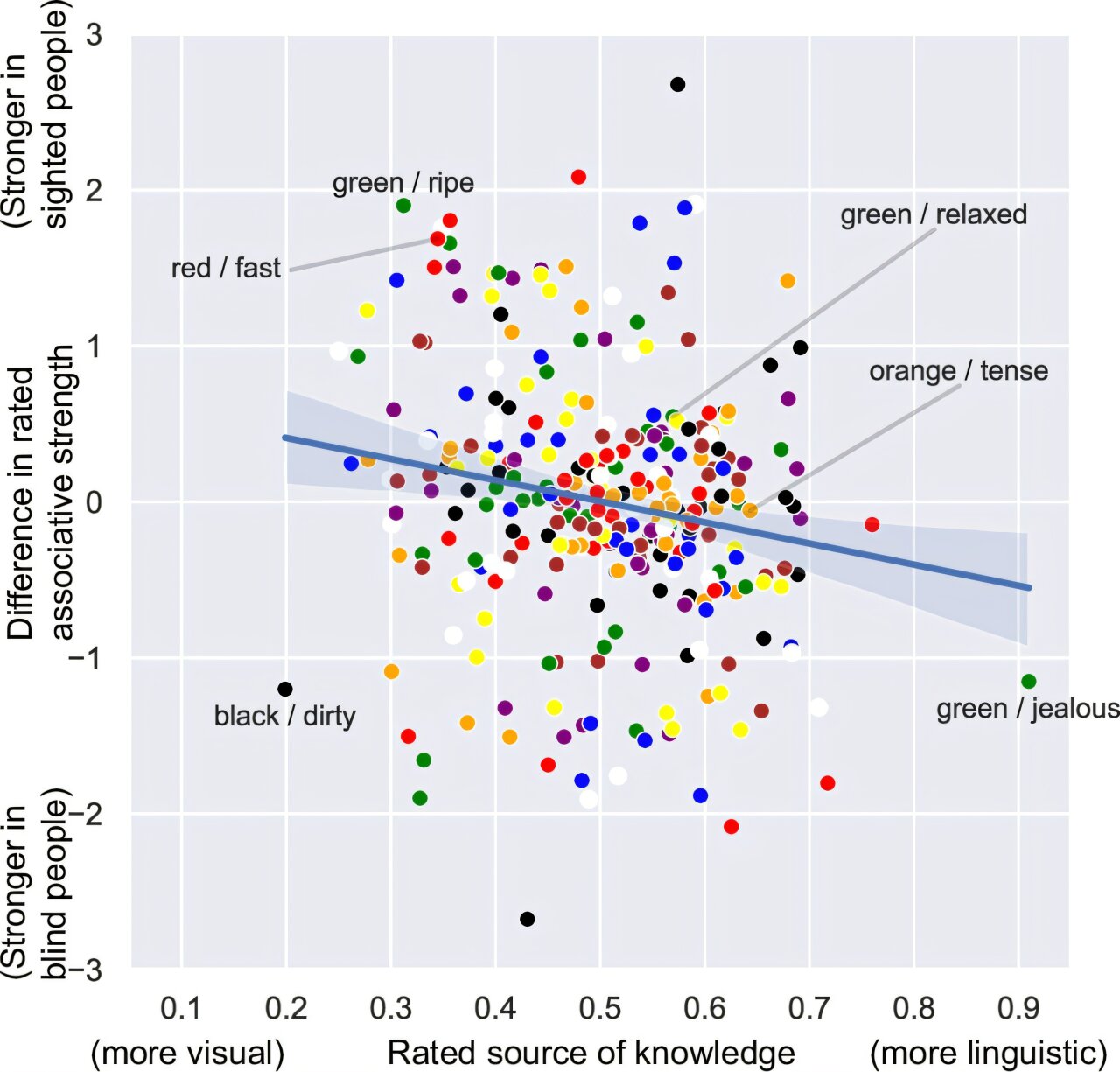Everyone knows that red is hot and blue is cold – even blind people who have never seen colors. According to a new study, this might be because language can organically absorb information about the visual world and seamlessly convey those associations, even to individuals who have never experienced them firsthand.
The research explores how certain colors evoke specific adjectives and emotions: green brings to mind nature and freshness, while purple suggests royalty and mystery, and so on.
It would seem that many of these associations are grounded in visual experiences: a red-glowing stove is hot, a blue sheet of ice is cold, a green plant is natural, etc. However, many of the same associations are also created by congenitally blind people, suggesting that language alone can express these connections.
To investigate this phenomenon, psychologists at the University of Wisconsin-Madison used mathematical and computational tools (including ChatGPT) to study word embeddings, which are mathematical models that capture how words are used together in large collections of words, like books, news articles, and transcripts of speech.
Word embeddings work by placing each word in a kind of virtual space, where words that appear in similar contexts are placed closer together. For example, if “red” and “hot” often show up in similar kinds of sentences, the model will place them near each other in that space.
It looked for the relationships between “obvious” and widely known associations, like whether red is hot or cold, but also more obscure links between colors and abstract things like alive-dead, fast-slow, new-old, unripe-ripe, soft-hard, light-heavy, fresh-stale, and more.
The team then compared the results from their word embedding models to data gathered from real people, both sighted and blind.

This graph from the study gives a rough idea of the nature of the color associations.
In sum, it showed that blind and sighted people make very similar color associations, despite their very different perceptions and experiences.
This implies that associations are often learned via second-order co-occurrences, which are indirect connections between words. To put it another way, color associations likely start off from visual experiences, but they can be transmitted purely through language.
The study suggests that this is not simply because blind people have been told that, for example, “red is hot.” Rather, these associations seem to be organically baked into the language.
This was highlighted by links made by all people when making more unusual associations with colors and abstract themes, like happy-sad, calm-angry, submissive-aggressive, relaxed-tense, and so on. In everyday language, people don’t typically make links between, for example, yellow with abstract concepts like fast-slow, but when prompted to do so, both sighted and blind individuals tend to make surprisingly similar associations.
“We show that these associations are indeed embedded in the statistical structure of language,” the study authors write in their paper.
This is one of the many incredible abilities of language. Over time, words accumulate layers of cultural and sensory meaning, often shaped by collective experience. When people describe something as “red-hot” or “icy blue,” they’re drawing on metaphors rooted in vision, but these metaphors become so ingrained in language that they can be understood even without direct sensory input.
“How can people with no direct experience of the visual world come to possess rich visual knowledge? Our findings suggest the answer is language, specifically, its distributional structure embedded in which is a rich repository of information about the perceptual world,” the authors conclude.
The study is published in the journal Communications Psychology.
Source Link: "Red Is Hot" And "Blue Is Cold" Even For People Born Blind, A New Language Study Shows